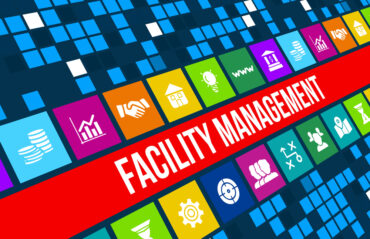
As data becomes more ubiquitous, it must be better understood, better interpreted, and better connected to the world around us.
Data analytics professionals are having a moment. Long sequestered in back rooms and anonymous cubicles in most companies, those who make their living demystifying business data – business intelligence analysts, data scientists, statisticians, quantitative analysts, data engineers, actuaries, logistics specialists, and the like – are beginning to take important seats at the table in conference rooms (and Zoom meetings) the world over.
In the U.S., the Bureau of Labor Statistics predicts that the number of jobs in the data science category will grow 31% nationwide by 2029. The World Economic Forum, in its 2018 Future of Jobs Report, stated that data analysts and scientists are among the occupations that will experience increasing demand up to 2022; its analysis also found evidence for accelerating demand for specialists who understand and leverage emerging technologies such as AI, machine learning, big data, and process automation.
Evolving technology
There are multiple reasons data analytics professionals like these are experiencing increases in both demand and value for what they do. Chief among these is the impact of automation. Thanks to new software capabilities, traditional tasks like normalizing, modeling, visualizing, and presenting data are being handled with little human intervention. As a result, many duties that used to occupy a majority of analyst time are now minimized or eliminated altogether, freeing them up to make more valuable, visible contributions.
According to the same World Economic Forum report, the augmentation of tasks through technology may provide these professionals with support for more high-value tasks such as reasoning and decision-making. With businesses needing to compete on new products, expand into new markets, and achieve higher levels of efficiency in production and consumption, data analytics professionals are finding their insights and interpretations to be highly treasured.
Wider skillsets needed
As automation plays a larger role, modern data professionals must be equipped with more than technical skills, however valuable those skills may be.
Too often in the past, data scientists who occupied their time creating models and training them with sample datasets were siloed away from the business and removed from actual business problems. As a result, most models didn’t translate well in production. One study found that 87% of all data science models are ultimately thrown away simply because they don’t translate into successful business outcomes.
So what are the new skills needed most by today’s data analytics professionals?
First, they need a robust dose of business acumen. Everything done in the analytics world ultimately is there to help drive outcomes for the business. If data analytics professionals lose sight of that, much of their effort becomes meaningless. Put another way, if they understand the larger business challenges upfront, they can guide their teams in creating analytics-driven solutions to those problems.
Business knowledge doesn’t mean knowing arcane jargon; it means having a basic knowledge of how business operates. Data analytics professionals need general business skills: how marketing works, how supply chains work, how Wall Street works. If they can’t speak the language and understand the fundamental problems their business is trying to solve, they will never solve those problems and engage their stakeholders. Engagement is power.
They should take the time to sit with the marketing team, sit with business departments and the HR folks. It not only helps them to understand the business, but it also helps those departments better appreciate how analytics can help them succeed.
Second, they need data storytelling skills. It’s quite a neglected competence – and not because data scientists and analysts have been avoiding it. Until only recently, those professionals have been more occupied with preparing and visualizing data than explaining its meaning. Thankfully, automation is beginning to change all that.
Many people think the output of self-service analytics satisfies the data storytelling imperative. But it doesn’t. Data analytics professionals can build content filled with numbers and data science models, but decision-makers won’t grasp their meaning easily because there is no context. Like the famous rabbit-duck illusion, it’s easy to come away seeing either – or both, depending on your perspective. Without a narrative, data can easily generate the same sense of ambiguity.
Data storytelling is the true last mile of analytics. It requires both technology and skill to shape it. The technical part is an analytics platform that can tell you what data is relevant to the question posed. In response to a question like, “Why did that spike occur in October?” the platform should not only automatically run models for you that reveal the key drivers behind the spike but also create the charts and narratives that explain those drivers.
In other cases, automated business monitoring tools eliminate the need for data analytics professionals to initiate questions. Automated business monitoring trawls through data continually in real-time. It discovers the most important changes and bubbles up the relevant notifications to any surface the user chooses— a mobile app, a dashboard, a timeline, or whatever other app is important. Furthermore, it guides the user to the underlying dynamics with a single click and leads them to an understanding.
When the busywork of data is automated and a majority of analyst time is suddenly freed up, data analytics professionals can do what they were always meant to do: Translate insights back to the business.
Third, they need to be able to place insights not only into an internal context but also an external one. A perfect example of this comes from an analysis of liquor data in a particular U.S. state. After modeling sales for hundreds of brands of liquor over an extended period, automated business monitoring surfaced a huge, mysterious increase in whiskey sales across the state in October 2018. Out of nowhere, a massive “hockey stick” increase.
Automated analysis further revealed that premium whiskey as a category spiked, especially in big store chains. Virtually all the increase was attributed to one specific brand and whiskey product. The question was, why?
The answer came from outside the dataset and even outside the store chains themselves. In October 2018, the distiller in question partnered with HBO to release a special Game of Thrones Edition for that brand of whiskey, timed for the season debut of the megahit fantasy series. Without a broad knowledge of the business, culture, and marketing, no data professional would have been able to adequately place the spike in context and deliver it back to the business.
Data is changing
Today, the very nature of data is changing. As it becomes more ubiquitous, extracted from an increasing number of sources, and is more and more fundamental to the function of business, it must be better understood, better interpreted, and better connected to the world around us.
This is the evolving role of the analytics professional. It’s a role that perhaps no one in the modern enterprise could have foreseen to be so critical or so dynamic, which is why new skills are so sorely needed. If there is a lesson to be learned in this fast-changing environment, it’s that data doesn’t stop at the four walls of the business. And neither can the person whose responsibility it is to explain it.





























